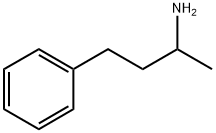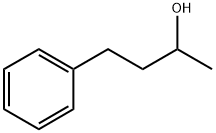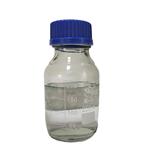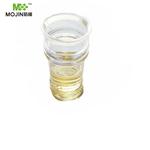Chemical Properties
clear colorless liquid
Uses
2-Amino-4-phenylbutane is used in the synthesis of N-substituted derivatives of (1-methyl-3- phenylpropyl)amine.
Biological Functions
Amphetamine is an indirectly acting adrenomimetic
amine that depends for its action on the release of norepinephrine
from noradrenergic nerves. Its pharmacological
effects are similar to those of ephedrine; however,
its CNS stimulant activity is somewhat greater.
Both systolic and diastolic blood pressures are increased
by oral dosing with amphetamine. The heart rate is frequently
slowed reflexively. Cardiac output may remain
unchanged in the low- and moderate-dose range.
The therapeutic uses of amphetamine are based on
its ability to stimulate the CNS. The D-isomer (dextroamphetamine)
is three to four times as potent as the
L-isomer in producing CNS effects. It has been used in
the treatment of obesity because of its anorexic effect,
although tolerance to this effect develops rapidly. It
prevents or overcomes fatigue and has been used as a
CNS stimulant. Amphetamine is no longer recommended
for these uses because of its potential for abuse.
Amphetamine is useful in certain cases of narcolepsy or
minimal brain dysfunction.
Flammability and Explosibility
Not classified
Safety Profile
A poison by intraperitoneal and parenteral route. Moderately toxic by ingestion.When heated to decomposition it emits toxic vapors of NOx.
Synthesis
Amphetamine is prepared by treating phenylacetone
with formic acid and ammonia under
the Leuckart-Wallach conditions .






